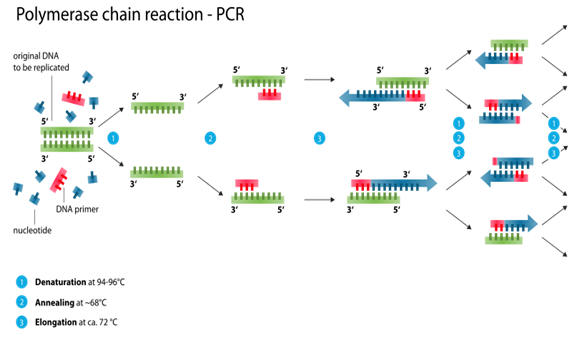Explain briefly
PCR
PCR or the polymerase chain reaction is the invitro amplification of DNA for experimental purpose when the sample is in very low quantity. This process was first developed by Kary Mullis in 1985. The process uses template DNA which is first denatured by heating at 96˚C followed by annealing of two primers at the 3’ ends of the template DNA strands at a comparatively lower temperature. Now DNA polymerase is added along with the four deoxyribonucleoside triphosphates (dATP, dTTP, dCTP and dGTP) to elongate the DNA strand. Normal polymerases cannot withstand the high temperature of the PCR thus a special polymerase called the Taq polymerase is added. This Taq polymerase is thermostable in nature as it is isolated from the bacterium Thermus aquaticus which is found in the hot springs and thus is active in very high temperatures. The full process is maintained at a range of 72˚C to 75˚C and is allowed to run for any required number of cycles.
